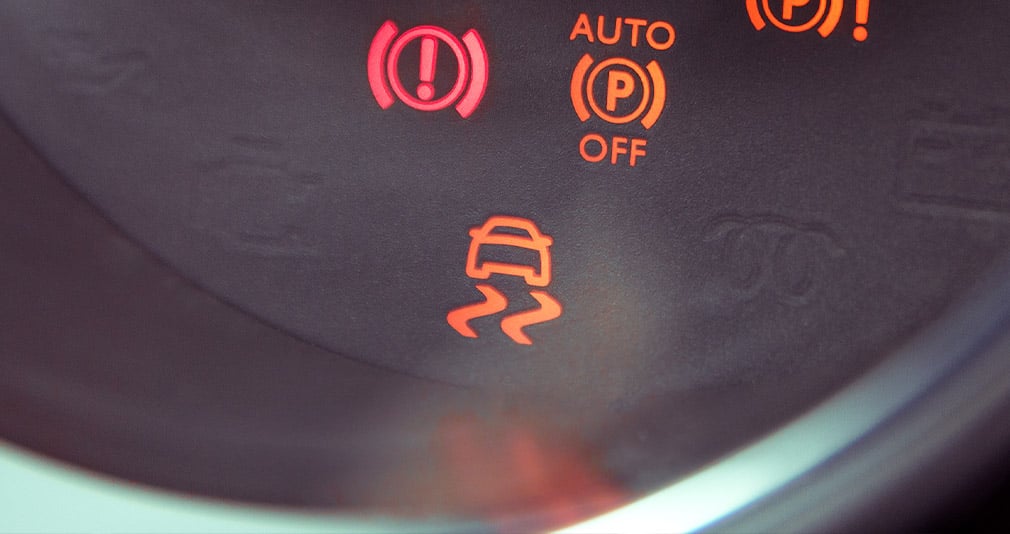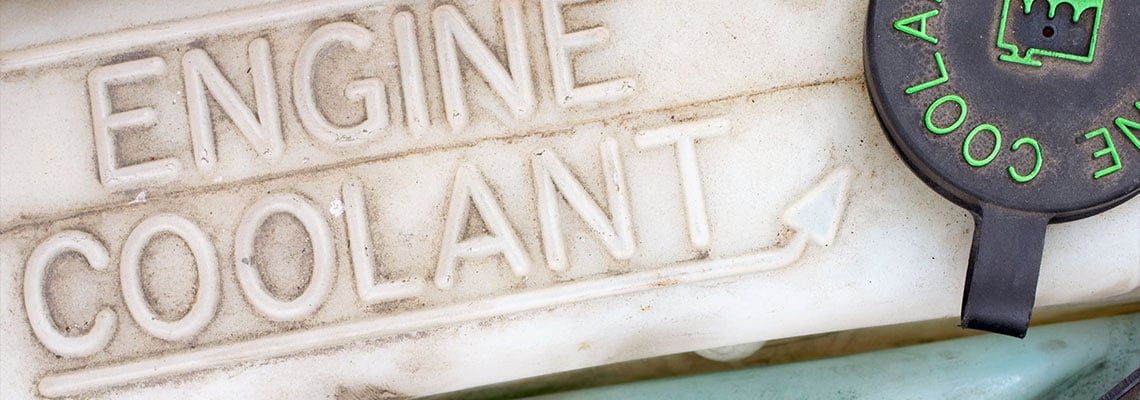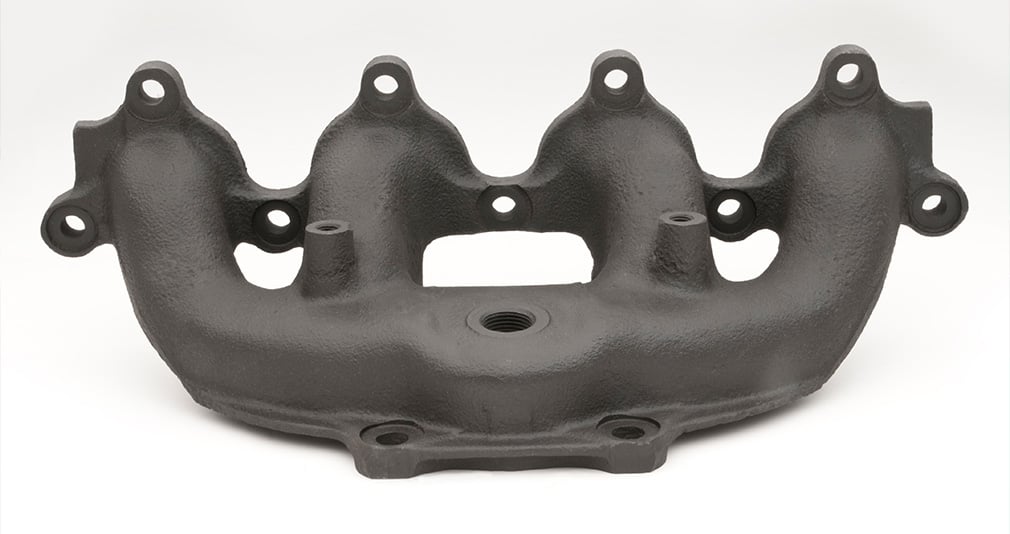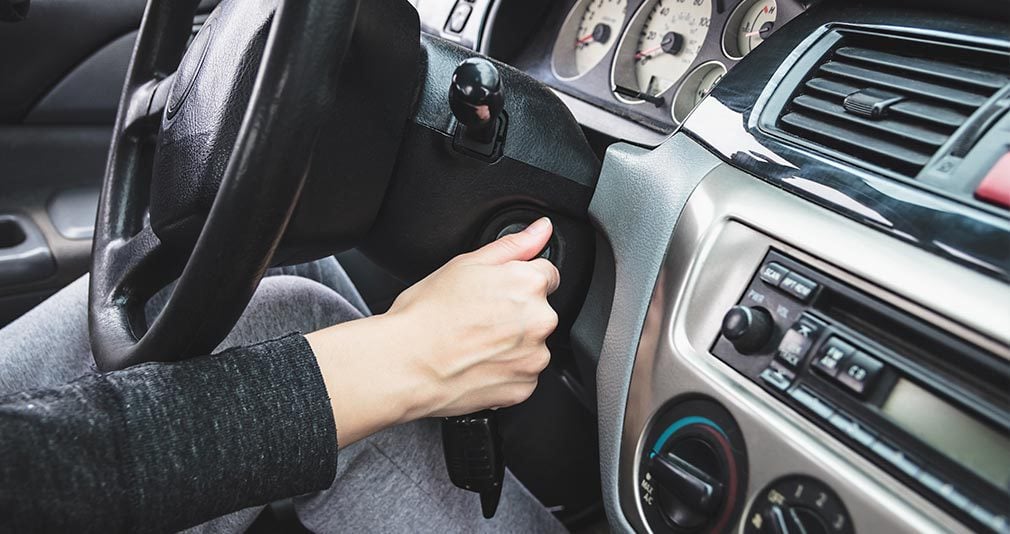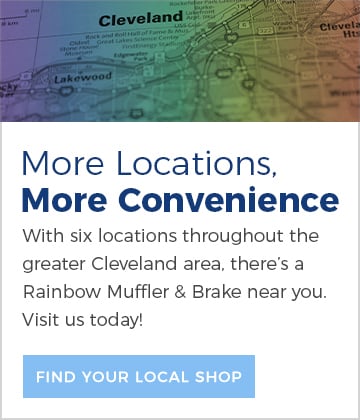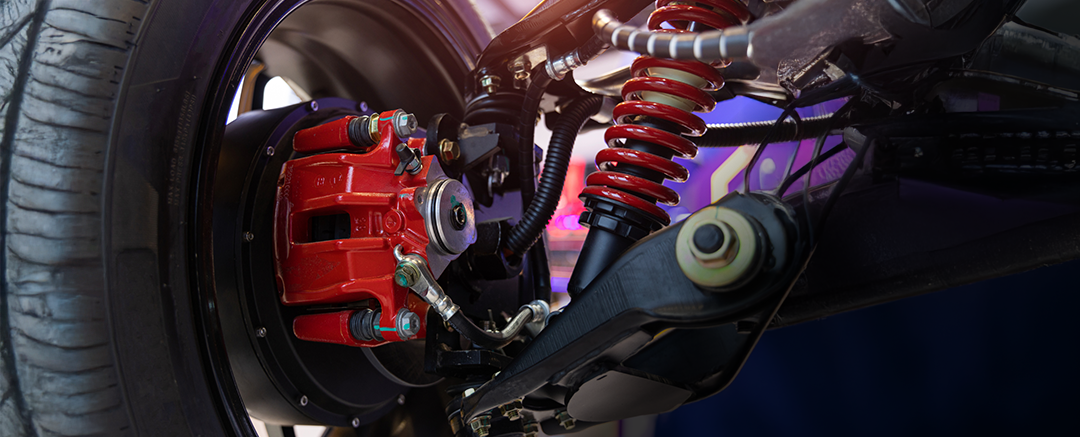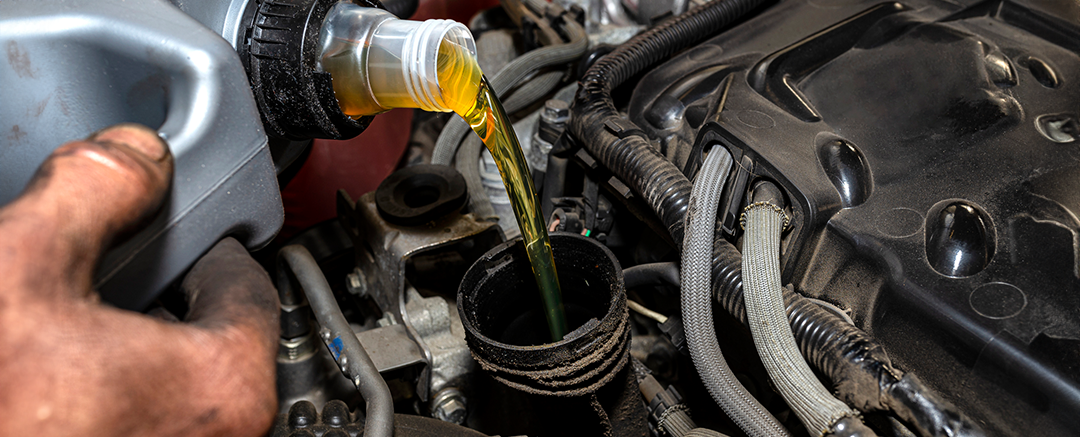Your car has a computer that monitors and runs all of your vehicle’s components, ensuring that the parts are functioning properly. When something goes wrong, the computer will alert you via lights on your dashboard. When your check-engine light turns on, for example, your mechanic will read the codes that the computer has generated to indicate which parts need attention.
Another light on your dashboard is called the Traction-Control Light (TCL). It can look different, depending on your vehicle model, but it usually has the letters “TC” or an image that looks like a car with lines bending away from the tires. There are several circumstances that will cause your TCL to turn on, and each signals a different issue.
What Does the Traction-Control Light Mean?
Depending on the situation you’re in, an illuminated TCL may simply mean that the system is working properly. The traction-control system is designed to detect when your car’s tires lose contact with the road during icy, rainy or windy conditions. When the tires slip, your traction-control system turns on to shift the power from the tire that’s slipping to the tires that are still successfully gripping the road. This transfer of power allows you to safely continue driving in the right direction. Without the traction-control system, you would run the risk of hydroplaning or skidding off the road.
Why Is My Traction-Control Light On?
If you’re driving in inclement weather and the TCL turns on, it means that your system is working to keep your wheels in contact with the road. It may turn on and off briefly or begin to flicker, but this indicates that the system is working as it should while you are on slippery roads.
If, however, your TCL turns on while you’re driving in good weather conditions, there is an issue with the system. If the light blinks on and off intermittently, it can mean that the system is “hard coded” or beginning to deteriorate. This issue can be caused by faulty wheel-speed sensors — which alert your car’s computer to a potential loss of traction — or there could be a problem with the traction-control system’s computer. A blinking TCL could also mean that the system isn’t fully functional, so it’s important to be careful in poor weather if you see this.
If the TCL turns on and stays on without blinking, this can signal that the system has been deactivated. If that’s the case, your car’s computer won’t be able to sense when your wheels lose traction. It’s safe to drive in normal weather conditions when your traction-control system is deactivated, but if there’s any chance you’ll be confronted with slippery roads, it’s important to have your system reactivated.
How to Fix a Faulty Traction-Control Light
If your TCL comes on during good weather, there’s no need to panic. Find a safe place to pull over and restart your vehicle. If an anomaly triggered the light, it should turn off once you have restarted your car.
If the light stays on after you’ve restarted your vehicle, it’s time to take it to a trusted mechanic who will be able to read the vehicle’s computer and identify any issues that need to be addressed. As you’re driving to your mechanic, remain cautious and avoid any hard acceleration that could result in your tires skidding.
If the TCL is accompanied by your anti-lock braking system light and the red brake-warning light, your entire braking system has been affected and your car is no longer safe to drive. Have your vehicle towed to the repair shop instead of driving it there yourself.
Why You Should Not Ignore Your Lights
Your car’s dashboard lights aren’t there just to bother you. The computer responsible for managing all of the systems and parts of your vehicle is constantly monitoring for problems that could result in breakdowns or damage. These potential issues are communicated to you, the driver, through your dashboard lights. Some of them, like the oil-change light, are simply maintenance reminders. Others, like the check-engine light, are warnings that something needs to be inspected as soon as possible.
When you bring your vehicle to an auto repair shop, the technician will scan the computer and read a trouble code that tells them what part of the vehicle triggered the code and needs attention. From there, they will be able to identify the problem and either repair or replace whatever is damaged.
It’s smart to get into the habit of bringing your car in as soon as one of your dashboard lights illuminates. You will save time and money by addressing problems while they are still small. If you continue to drive with activated warning lights, you risk having a small problem turn into a massive repair, or even total engine breakdown. Plus, it’s unsafe to drive a car that may have engine or brake issues. You could end up in an accident or on the side of the road.
The traction-control light is usually a sign that your vehicle is working properly by maintaining traction on a slippery road, but it can also mean that your car has some damaged sensors or wires. Keep yourself safe on the road by taking your vehicle to a trusted auto repair shop at the first sign of trouble.

